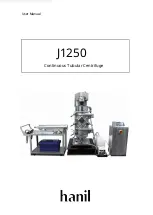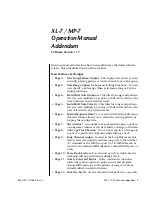
1
INSTRUCTION MANUAL
WC7035-MB
WC7150-MB
Plate Heat Exchanger
A. Overview of the Plate Exchanger:
1.
The Plate Heat Exchanger allows two kinds of fluids with different temperatures to exchange heat indirectly or cool through the plate.
A plate exchanger has a number of advantages: efficient thermal exchange, high efficiency, low heat loss, large exchange area, quick
assembly, easy and safe to operate, simple connections, and long service life.
2.
Examples of Plate exchangers used in food & drink manufacturing:
• Beer Products: beer, wort
• Wine products: rice wine, wine, etc.
• Dairy products: milk, milk powder, milk beverages, yogurt, etc.
• Vegetable protein beverages: peanut milk, milk tea, soy milk, soy milk drinks, etc.
• Fruit drinks: fresh juice, juice tea, etc.
• Tea drinks: beverages of tea, aloes, fruit & vegetables, etc.
• Seasonings: soy sauce, rice vinegar, tomato juice, sweet and pungent sauces, etc.
3.
Application to industrial liquids processing, including:
• Pharmaceutical production
• Dyeing
• HVAC thermal exchange
• Chemical industry
• Power stations, heating for swimming and bathing
• Petroleum
• Metallurgy
• Domestic hot water
Important Safety Information
Please read this entire instruction manual for important safety information before using your heat exchanger.
Failure to follow these warnings could result in serious injury or death.
General Precautions:
•
Nuts not sufficiently torqued can cause the heat exchanger to leak.
•
Follow all instructions and warnings provided with cleaning agents when cleaning and sanitizing.
•
Pressurized cleaning chemicals can be an eye hazard. Wear goggles while cleaning.
•
Do not exceed 3 BAR of pressure in any flow path, this can cause damage to your heat exchanger seals.
•
Do not exceed 1.5 BAR of pressure between paths, this can cause damage to your heat exchanger seals.
Heat Hazards:
•
Do not touch the heat exchanger during operation. The surfaces may be hot and can cause severe burn damage to skin.
•
The exit cooling water can scald. Ensure you have the heat exchanger exit plumbed safely so hot water does not come into contact with
the operator or bystanders.
•
Wear rubber gloves and boots while operating to prevent scalding in the event of a loose connection.
Pressure Hazards:
•
Double check all connections before starting the process.
•
Contents of the heat exchanger may be under pressure. Confirm that the pressure has been released before detaching any connections.
•
Nuts not torqued sufficiently can cause the heat exchanger to leak.























